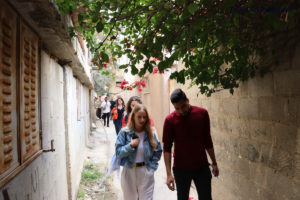Once you’ve booked your flights to Palestine, you’ll need to consider what to bring, and the contents of your luggage will depend on the time of year, your planned activities, and the duration of your stay. Generally speaking, it’s easy to buy basic shoes and clothes inexpensively in Palestine, so if you’re looking to travel light, you shouldn’t have trouble sourcing extra necessities. However, it’s a good idea to bring plenty of necessities, as they may be more challenging to find compared to a local Tesco or Walmart.
Palestine offers a diverse range of experiences for visitors. Whether you’re exploring its vibrant cities, historic sites, or natural landscapes with Travel to Palestine, you’ll find everything you need readily available, from clothing and cosmetics to essential hygiene products. Preparing for your trip with the right gear and clothing can ensure a comfortable and enjoyable stay, no matter the season.
What to Pack for Summer
If you’re traveling during the summer months, which last from around May until September when temperatures peak between 20-35 degrees Celsius, the weather will be continuously hot and sunny. Lightweight clothing – such as short-sleeved and sleeveless shirts, sandals, beach shoes, and a bathing suit – are essential. Hats, suncream, and sunglasses are a must to protect from the sun, especially if you plan on hiking. It’s also a good idea to pack a sweater or jacket since nights in the mountains and Hebron city itself can be cool.
Additionally, remember that some desert areas of Palestine, including parts of the hot Jordan Valley such as Ein Gedi, remain hot throughout the winter months. You shouldn’t need more than a T-shirt for a Christmas holiday in these parts. Long sleeves, however, are a must when traveling to religious sites, where women will be asked to wear a scarf over their shoulders and, occasionally, also to cover their heads.
What to Pack for Winter
For winter visits, from November to February, pack warm clothing including a coat (preferably a raincoat), good shoes, an umbrella, gloves, a scarf, and other warm items. While winter in Palestine is milder than in Europe, it can still be rainy and chilly. A small bag for day trips can be very convenient. If you plan to visit areas like Jericho or the Dead Sea, pack a bathing suit since the weather there is warm enough for swimming even during winter.
Clothing Recommendations for Men and Women
When traveling in areas with a majority Palestinian population, women should wear long sleeves and trousers, or a long skirt to avoid unwanted attention. While foreigners are generally warmly welcomed by residents, it’s important to respect the local culture, and for that reason, tight or revealing clothing should be avoided.
For men traveling in conservative areas such as Hebron, long sleeves aren’t necessary except perhaps to protect against mosquitos. Trousers are recommended, though sandals for both men and women are generally acceptable, even in conservative religious areas and sites.
Electrical Equipment
For your electrical equipment usage, make sure you bring a three-pin adapter, though most sockets also work with two-pin (European) plugs. For most education, language, and volunteer activities at the Center, we recommend bringing your laptop.
Must-Haves for Any Season
Regardless of the season, sunscreen, a sun hat, and sunglasses are essential. For hiking, you’ll need sturdy shoes and plenty of water, either in a canteen or multiple bottles. If you plan to camp outdoors, bring a sleeping bag, tent, and other camping equipment. However, most youth hostels provide sheets and blankets, so these items are unnecessary if you stay in such accommodations.
Conclusion
In summary, packing appropriately for your trip to Palestine can greatly enhance your experience, allowing you to fully enjoy the country’s rich history, stunning landscapes, and welcoming culture. With the right clothing, gear, and essentials, you’ll be well-prepared to explore everything Palestine has to offer, from its warm, inviting summers to its cooler, yet mild winters.
